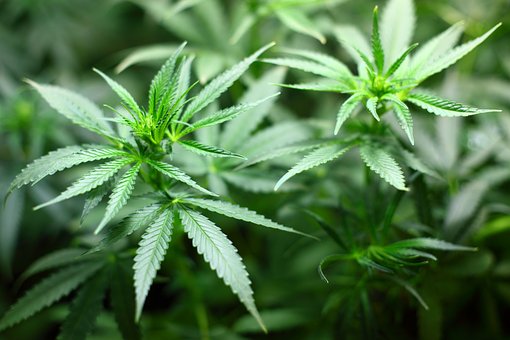Cannabis is a herbal plant that is well-known for its health benefits. It can have a delightful effect and may give you relief from the symptoms of multiple conditions, like chronic pain. People use seed oil, flower, dried leaves, and other portions of the cannabis herb for medicinal and recreational purposes. The most prevalent way to consume Cannabis is by brewing it as tea. It can be vaped or smoked as well. If the user doesn’t like the taste of Cannabis, you can consume them as edibles. You can also apply it externally as a topical. Each method offers its own set of benefits and drawbacks. For example, smoking provides a quick and efficient way to consume Cannabis, but it can also be harsh on the lungs. Vaping is a relatively new method of cannabis consumption that is becoming increasingly popular. It offers many of the same benefits as smoking but without the adverse effects on lung health. Edibles are another popular choice, especially for a more convenient or discreet option. Edibles are available in various forms, including candies, cookies, and brownies. However, they can take longer to take effect than other consumption methods. If you are interested in buying any product, you should give Cannabis West Vancouver a try.

5 Popular Uses Of Cannabis
1. Medicinal Uses
People have been using Cannabis for medical purposes for centuries. The plant contains various compounds, including cannabidiol (CBD) and tetrahydrocannabinol (THC), that are thought to provide various therapeutic benefits. CBD might be able to offer relief from pain and inflammation, while people believe THC helps to provide relief from anxiety and nausea. Cannabis enthusiasts are also using it to treat several medical conditions. In some cases, Cannabis is used as an alternative to traditional medications with harmful side effects. In other cases, people also use Cannabis as an addition to other treatments. The use of Cannabis for medicinal purposes is still controversial, but more and more research is being conducted into the potential benefits of this natural remedy.
2. Recreational Uses
Cannabis has been used for recreation for centuries. Recently, there has been a revitalization in the popularity of recreational cannabis use. It is partly due to the changing attitude towards the plant and the increasing availability of legal products. You can consume Cannabis in various ways, including smoking, vaping, and edibles. Regardless of how you consume Cannabis, Recreational Cannabis can provide users with a sense of relaxation and well-being. It can also enhance the senses and increase creativity. For these reasons, recreational cannabis use is likely to continue to rise in popularity in the years to come.
3. Industrial Uses
Cannabis has been used in many industrial applications for centuries. The plant’s tough fibers were once used to make rope and sails, and its seeds were a significant source of oil for lamps and soap. Today, Cannabis is still used in various industries, from food and beverage to construction and textiles. For example, the plant’s fiber can make paper and fabric, while its seeds can be used in everything from cooking oil to cosmetics. In addition, the plant’s oils are often used in paints, varnishes, and even biofuels. As more and more individuals are getting conscious of the many uses of Cannabis, the plant is likely to play a vital function in the industrial world.
4. Agricultural Uses
While most people think of Cannabis as a recreational drug, it has been used for centuries in various agricultural applications. The oils extracted from cannabis seeds have a variety of uses, including as a food additive and as a base for paints and varnishes. More recently, agriculturalists have begun using Cannabis as a source of biofuel. When burned, Cannabis produces high-quality charcoal that can be used in place of coal or gasoline. Additionally, the byproducts of the hemp plant can be used to make various products, including plastics and building materials. As more people become aware of the agricultural uses of Cannabis, its popularity is sure to continue to grow.
5. Environmental Uses
Users have been using Cannabis for centuries for its fibers, oils, and seeds. More recently, it has been recognized for its environmental benefits as well. Cannabis can be a renewable source of paper, textiles, building materials, and biofuel. It is also effective at cleaning contaminated soil and can be used to make biodegradable plastics. In addition, Cannabis helps to protect against deforestation by providing an alternative to wood products. As demand for cannabis increases, more farmers are choosing to grow the crop, which has led to a decrease in chemical pesticides and herbicides. As a result, Cannabis is not only good for the environment but also for the economy.
Dosing of Cannabis
Some cannabis products, which include capsules, gummies, or pills, can tell the users how much is available in a single serving. For example, the packaging of a bottle of CBD capsules might denote that there is 5 mg of CBD in one capsule.
If anyone is using cannabis oil or tincture, it will come in a dropper bottle. The packaging might indicate the quantity of Cannabis is in a single drop. From there, users can determine how many drops they require to use.
Sometimes it is difficult to understand how much Cannabis is available in one drop because the packaging may denote the total amount of Cannabis in the entire bottle, but not the quantity in a single drop.
The perfect dosage of Cannabis may vary from person to person based on age, weight, gender, metabolism, and previous cannabis usage. Consult a physician or healthcare provider to determine the perfect dosage for a specific condition.
Final Thoughts
Cannabis consists of compounds believed to have numerous effects on the human body. It is a famous recreational drug with both medicinal and therapeutic uses. Individuals desiring to use Cannabis for any purpose should check if it is legal to consume in their state. They must also consider its positive and negative effects on their physical and mental health.
